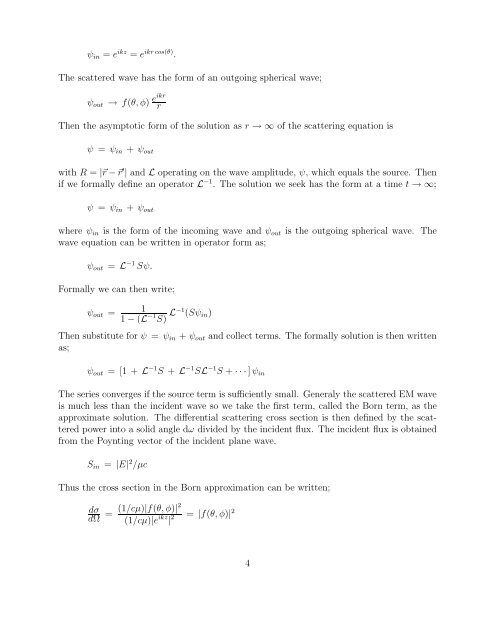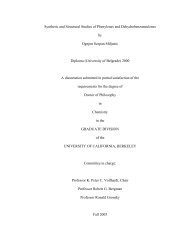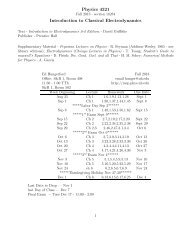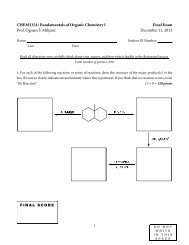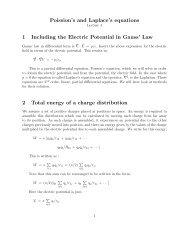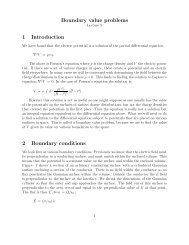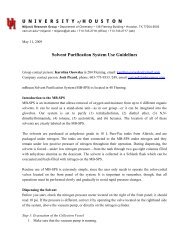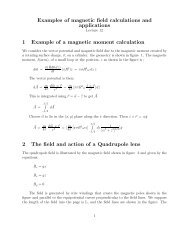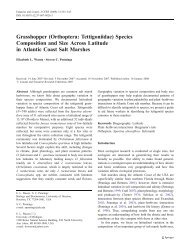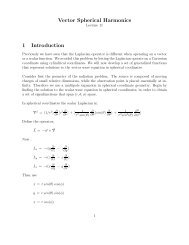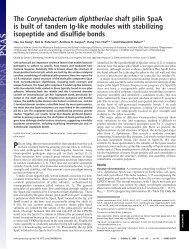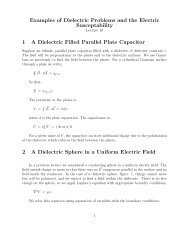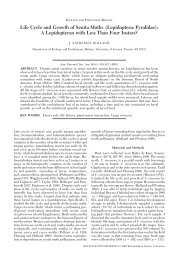Scattering 1 Classical scattering of a charged particle (Rutherford ...
Scattering 1 Classical scattering of a charged particle (Rutherford ...
Scattering 1 Classical scattering of a charged particle (Rutherford ...
You also want an ePaper? Increase the reach of your titles
YUMPU automatically turns print PDFs into web optimized ePapers that Google loves.
ψ in = e ikz = e ikr cos(θ) .The scattered wave has the form <strong>of</strong> an outgoing spherical wave;ψ out → f(θ, φ) eikrrThen the asymptotic form <strong>of</strong> the solution as r → ∞ <strong>of</strong> the <strong>scattering</strong> equation isψ = ψ in + ψ outwith R = |⃗r −⃗r ′ | and L operating on the wave amplitude, ψ, which equals the source. Thenif we formally define an operator L −1 . The solution we seek has the form at a time t → ∞;ψ = ψ in + ψ outwhere ψ in is the form <strong>of</strong> the incoming wave and ψ out is the outgoing spherical wave. Thewave equation can be written in operator form as;ψ out = L −1 Sψ.Formally we can then write;ψ out =11 − (L −1 S) L−1 (Sψ in )Then substitute for ψ = ψ in + ψ out and collect terms. The formally solution is then writtenas;ψ out = [1 + L −1 S + L −1 SL −1 S + · · ·] ψ inThe series converges if the source term is sufficiently small. Generaly the scattered EM waveis much less than the incident wave so we take the first term, called the Born term, as theapproximate solution. The differential <strong>scattering</strong> cross section is then defined by the scatteredpower into a solid angle dω divided by the incident flux. The incident flux is obtainedfrom the Poynting vector <strong>of</strong> the incident plane wave.S in = |E| 2 /µcThus the cross section in the Born approximation can be written;dσdΩ=(1/cµ)|f(θ, φ)|2(1/cµ)|e ikz | 2 = |f(θ, φ)| 2 4


